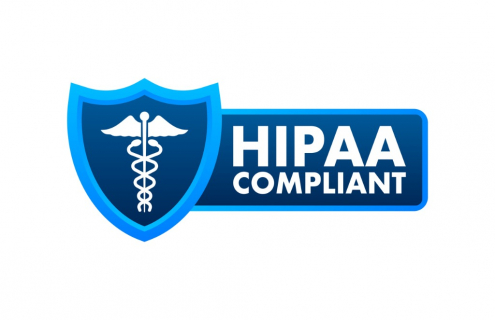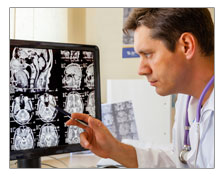US Teleradiology & Remote Radiology Reporting Services (2025)
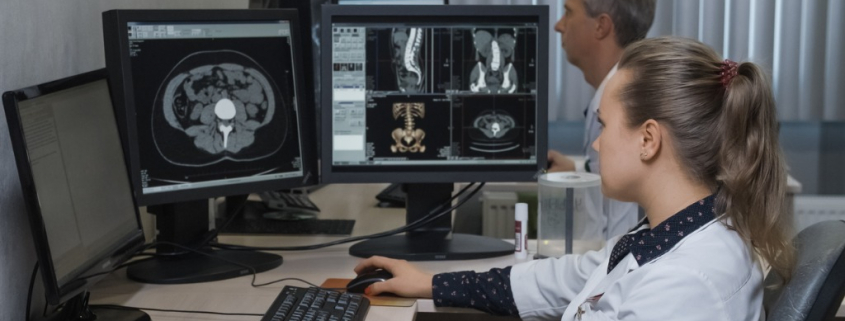
In 2025, NDI is providing US-based teleradiology services, remote radiology reporting coverage and diagnostic imaging interpretations in all 50 states. – National Diagnostic Imaging Teleradiology Company
Teleradiology is undergoing significant changes in 2025 that are driven by AI and machine learning, health-care advances, remote read models, web-based imaging systems, regulatory challenges, and workforce dynamics.
- NDI provides subspecialty teleradiology coverage, subspecialty reads, online radiology interpretation and diagnostic radiological imaging reporting services.
- Teleradiology clients use the NDI U.S. -based teleradiology service to get comprehensive and accurate radiology final reports online.
- Improve patient care with fast radiology report turnaround times.
In 2025, National Diagnostic Imaging teleradiology services are leading to an improved level of patient care in the United States.
In 2025, the easiest way to get online access to teleradiology services in the United States is to call the National Diagnostic Imaging Teleradiology Company at 1-800-950-5257 or email info@ndximaging.com.
Remote Online Radiology Reporting Services And Radiology Coverage Services Via Teleradiology Services In The United States of America
NDI Telehealth, Remote Radiology Reporting And Teleradiology Services In the U.S. In 2025
In 2025, teleradiology will continue to be a vital tool for hospitals and healthcare providers to improve patient care. Teleradiology uses technology to connect radiologists with hospitals to interpret medical images and provide diagnoses.
In 2025, radiology telehealth is projected to see substantial growth in the use of AI-assisted image interpretation, with advanced algorithms helping radiologists in faster and more accurate diagnosis, particularly for anomaly identification and cancer detection.
AI and machine learning can help improve the efficiency and accuracy of teleradiology.
However, the accessibility of telehealth services could be limited due to potential restrictions on where patients can receive telehealth consultations unless Congress extends current flexibilities allowing for broader access to remote radiology services.
US-based NDI radiologists remotely diagnosis patients and distribute radiology services to clinicians via electronic information and telecommunication technologies.
In 2025, radiology practices continue to grapple with cuts to the Medicare Physician Fee Schedule, with reductions of 3%–4% expected in 2025 when figuring in inflation.
This is compounded by rising costs for staffing and practice operations, creating access-to-care concerns for Medicare beneficiaries.
NDI telemedicine experts use technology such as PACS software, Zoom video conferencing, digitally based medical imaging for radiology and the Internet to connect hospitals and referring physicians with NDI subspecialty radiologists for consultations and in-depth advice.
In 2025, the demand for radiologists will continue to outpace supply, especially in underserved areas.
A significant shortage of radiologists in the United States has contributed to the growth of the National Diagnostic Imaging teleradiology company.
Many diagnostic radiologists at NDI have taken the opportunity to evolve into full-time teleradiologists. Get more information about NDI’s online radiology services, here.
The NDI teleradiology company has taken over call for many medical practices that are too small to handle the expanding volume of studies.
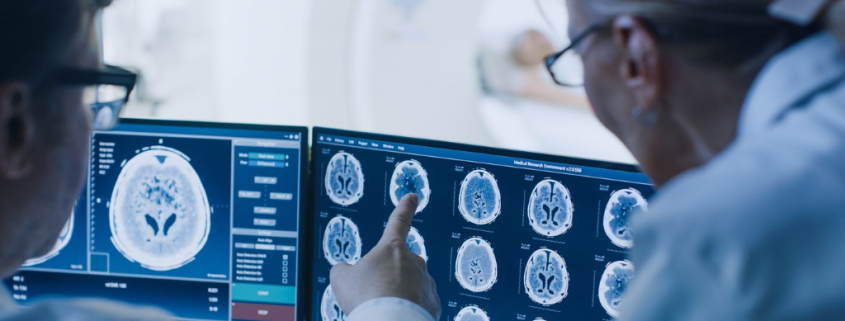
NDI teleradiology services and radiology reading services increase imaging efficiency, reduce turnaround times and mitigate both geographic and temporal discrepancies in imaging care.
There are many factors why healthcare providers choose National Diagnostic Imaging as their teleradiology vendor.
Factors To Consider When Choosing A Teleradiology Service Provider
- Diagnostic Image Quality And Resolution
- Radiology Report Turnaround Time
- Radiologist Expertise And Credentials
- Data Security And HIPAA Compliance
- Integration With Existing Software, PACS And RIS Systems
- Scalability And Operational Flexibility For Growing Patient Imaging Volumes
- Customer Technical Support
- Teleradiology Solutions Pricing Model
- Teleradiology Service Contract Terms
What Is The Meaning Of Teleradiology?
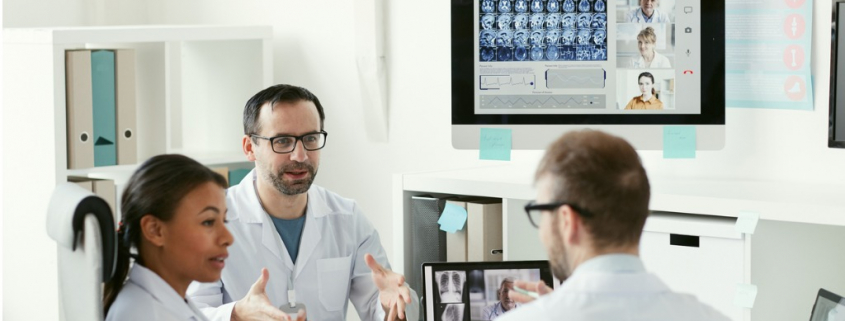
Teleradiology is a branch of telemedicine in which telecommunication systems are used to transmit radiological patient images from one location to another. Teleradiology is one of the most advanced parts of telemedicine in the United States. Teleradiology is the transmission of radiological patient images, such as x-rays, CTs, ultrasounds and MRIs, from one location to another for the purposes of sharing studies with other radiologists and physicians.
The word teleradiology refers to the technological component of transmitting medical images to off-site radiologists who interpret medical images remotely because they are not reading the exams and reporting on the studies on-site at the location where the diagnostic imaging procedures and tests are conducted.
What Are Teleradiology Services?
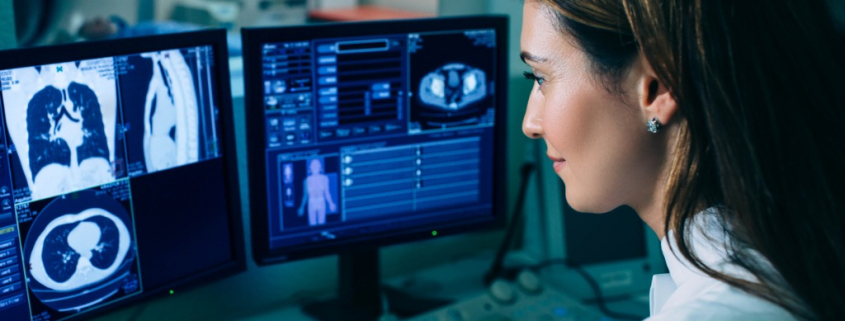
Hospital emergency rooms, mobile X-Ray services, outpatient diagnostic imaging centers, hospital radiology departments and mobile EKG services use NDI teleradiology services. Other healthcare providers such as mobile ultrasound services, radiation oncology teams, chiropractors and private treating physicians also use NDI’s U.S.-based teleradiology services to have access to a consulting subspecialized radiologist.
In the United States in 2025, teleradiology services are used by treating physicians to electronically transmit medical images to remote off-site NDI radiologists for radiology reads, overreads, diagnostic interpretations, final reports and consultations. The NDI teleradiology group provides custom diagnostic radiological imaging reporting services online.
Telemedicine involves technology such as real-time video conferencing, digital imaging and the Internet to link hospitals with specialists like radiologists for in-depth advice. For radiology, hospitals send images over the Internet to a team of radiologists located in another state or country, who interpret the image and send back a diagnosis in minutes.
The National Diagnostic Imaging teleradiology company provides outstanding radiology reading services.
For comprehensive best-practice guidelines for teleradiology usage, read this white paper. To learn about guidelines for the practice of teleradiology, read this white paper in PDF format.
National Diagnostic Imaging is a US teleradiology company that provides teleradiology services and remote radiology image interpretations online in all 50 states.
NDI is a US-based teleradiology provider that enables hospitals, healthcare facilities and clinics to get access to cost-effective, timely and high quality radiologic interpretations.
What Are Remote And Online Radiology Reporting Services?

NDI radiologists use teleradiology services to remotely read, interpret and report on radiology tests, diagnostic exams, radiological studies, scans and images. Remote radiologists at NDI are licensed to practice medicine within the state(s) in which the NDI teleradiology group provides services and is credentialed in all of the facilities at which remote interpretive readings (preliminary and/or final authenticated reports) are rendered.
In 2025, the National Diagnostic Imaging teleradiology company provides remote and online radiology reporting services in the United States by using radiology computer workstations, HIPAA compliant PACS software, high-speed Internet connections, telecommunications systems and online databases.
The written radiology report is the primary work product of the diagnostic radiologist and acts as the main method of communicating imaging findings.
Radiology reports written by NDI radiologists are PDF documents that detail the most important conclusions of a diagnostic imaging study. These reports are shared via HIPAA compliant teleradiology services.
The Current Procedural Terminology (CPT) code range for Radiology Procedures 70010-79999 is a medical code set maintained by the American Medical Association.
NDI provides remote and online radiology reporting services to our clients that need clinical coverage alternatives via teleradiology for multiple subspecialties, imaging modalities and different imaging tests.
Healthcare providers and patients get radiology reports and interpretations online, here. Find out how treating physicians and patients request and get final radiology reports with conclusions online, here.
The radiology report represents the sum of a radiologist’s highest level of synthesis and insight into a patient’s condition and is the most important way that radiologists contribute to patient care. In most instances, it is the only communication with referrers.
Diagnostic imaging reports are the primary method of communicating diagnostic imaging findings between the radiologist and the referring clinician.
National Diagnostic Imaging radiologists are doctors who supervises reads and interprets radiology images and write detailed and actionable reports for healthcare provider and referring physicians.
RadReport.org provides radiology reporting templates for many common radiology procedures that have been reviewed by an international panel of radiologists, as well as templates shared by members of RSNA and the European Society of Radiology.
How NDI Radiologists Write Great Radiology Reports
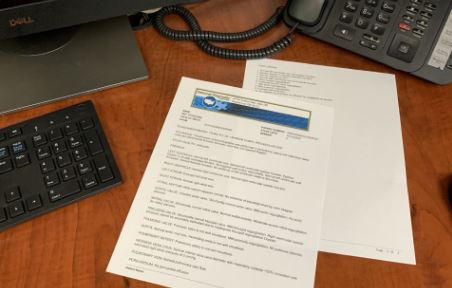
Pictured above is an example radiology report written by a fellowship trained US board certified radiologist at the National Diagnostic Imaging online radiology reporting company. These radiology interpretation reports are provided to NDI customers (healthcare providers and patients) in PDF format online through teleradiology services, a HIPAA-compliant online portal, web and cloud-based PACS software systems and email. Get information about on-site and off-site radiology reporting turnaround times, here.
The radiology report represents the distillation of a decade or more of medical training. There are key principles that help to craft the findings, impression, and recommendations to promote clear actionable reporting.
The findings section emphasizes short, informative, factual phrases that provide an accurate radiologic description of all abnormalities with pertinent negatives. The findings section is for the factual observations about the study and reflects the thought process of the radiologist, relies on technical language for precision, and provides the basis for the subsequent formulation.
The impression reflects the radiologist’s greatest insights into the meaning of the findings, leading to a diagnosis, differential diagnosis, and recommendations, and is the opportunity to provide the most direct and meaningful patient care. Reporting is a continual work in progress that matures throughout a career with experience, confidence, and follow-up.
The impression is the thoughtful synthesis of the meaning of the findings leading to a diagnosis or differential diagnosis and recommendations for further management. It represents the sum of all the efforts in interpreting the imaging study and answering the clinical question. It should use clear unambiguous phrasing similar to that used when speaking directly to an ordering provider or presenting at a multidisciplinary team meeting.
It is advisable to assume that the impression is usually the only part of the report read by the referring clinicians, who often only read the findings when the impression is unclear. The emphasis in the impression should be on actionable clinically significant information.
NDI radiologists write great radiology reports by focusing on the following principles when describing the pertinent positive and negative observations about a diagnostic imaging study in the findings and impression sections of their document.
Key Principles For The Findings Section Of The Report
- Save The Interpretation For The Impression Section Of The Report
- Use Terms of Perception Sparingly
- Avoid Redundancy
- Keep It Organized
Key Principles For The Impression Section of the Report
- Know Your Audience
- Lead with the Diagnosis
- Avoid Technical Language
- Embrace the Role of Revision
- Manage Challenging Cases
- Make Appropriate Recommendations
The findings section is for the factual observations about the study and reflects the thought process of the radiologist, relies on technical language for precision, and provides the basis for the subsequent formulation.
The impression section is for the thoughtful synthesis of the meaning of the findings leading to a diagnosis or differential diagnosis and recommendations for further management.
It represents the sum of all the efforts in interpreting the imaging study and answering the clinical question. It should use clear unambiguous phrasing similar to that used when speaking directly to an ordering provider or presenting at a multidisciplinary team meeting.
It is advisable to assume that the impression is usually the only part of the report read by the referring clinicians, who often only read the findings when the impression is unclear. The emphasis in the impression should be on actionable clinically significant information.
Featured Video – How To Make A Great Radiology Report
Posted On YouTube.com on October 1, 2020 by Radiology Channel
Understanding Radiology Reports

Radiologists write reports for the provider who ordered the exam. A radiology report represents the sum of a radiologist’s highest level of synthesis and insight into a patient’s condition. Learn how to write a radiology report, here. Access radiology reporting templates that radiologists create consistent and comprehensive diagnostic reports, here. A radiology report is the official record of medical images that contains the interpretations and images. Radiology report turnaround time is a crucial component in diagnostic radiology. NDI provides STAT/emergent radiology reports normally within 1 hour, if necessary.
In a thorough review of the literature, these authors discuss current approaches and emerging initiatives to increase the understanding of radiology reports by referring physicians as well as patients.
Standard radiology reports often follow a narrative or free-form format, allowing the radiologist to highlight radiologic findings of importance while diminishing those insignificant to the clinical context. Unsurprisingly, researchers have noted that less than four percent of radiology reports are written at an eighth-grade level, with the average report requiring college-level reading skills. In the past, institutions have placed an embargo on radiology reports. While patients may request access to them, the embargo allowed referring providers a few days to review the report and discuss the results with the patients and their families.
However, with the widespread adoption of electronic health records (EHR) and the 2016 passage of the 21st Century Cures Act, patients now have unprecedented speed and access to their radiology reports. Quite often, patients will have read their reports before their referring providers. Since the 21st Century Cures Act, there has been a 78.3 percent spike in patient calls regarding radiology reports. Disruptive innovations and new legislation have pressured radiologists to provide reports that balance the clarity of information with manageable language for providers and patients.
Accordingly, let us take a closer look at the current concerns and preferences of physicians and patients on radiology reports, immediate solutions, such as structured reporting, patient summaries, and infographics to improve patient inclusivity, and long-term goals to redesign the traditional report and implement an interactive radiology report.
The future steps of redesigning and utilizing interactive radiology reports would continue to break down barriers to health-care access and literacy. The current push for patient-centered radiology reports creates a unique opportunity for radiologists to elicit the needs of patients directly. It also allows patients to shape the delivery and communication of their health information. While the development and adoption of redesigned reports are still in the early stages, the overwhelming support from patients offers clear assurances in favor of patient-centered radiology reports.
About Radiology Reports Written By NDI Radiologists
NDI radiology reports effectively communicate their patient imaging findings and state their official interpretation of a patient imaging examination or procedure.
Radiology reports are a method of communication from NDI radiologists to general practitioners (GP) in the primary care setting.
NDI provides radiology image interpretations and reports via teleradiology. National Diagnostic Imaging provides expedient remote radiology interpretation services and expert online radiology reading services of medical images and diagnostic studies.
NDI radiologists can work from home to increase their productivity by using NDI teleradiology systems. Remote reading enables radiologists to interpret studies more efficiently, it improves working conditions and it provides a flexible work schedule.
Off-site interpretations by experienced radiologists at NDI enable findings and abnormalities to be detected early.
Teleradiology makes it easy for NDI radiologists to deliver quality radiologic interpretations to hospitals and other healthcare facilities.
US-Based Teleradiology Technology Implementation Services
Radiology Services And Online Radiology Services To Obtain Diagnostic Images And Deliver Final Reports
The National Diagnostic Imaging Teleradiology Company provides teleradiology services to digitally obtain radiological patient images (x-ray, ultrasound, CT scans or MRI), to electronically share imaging studies online and to submit subspecialty radiology final reports remotely. NDI also provides radiology study interpretation services.
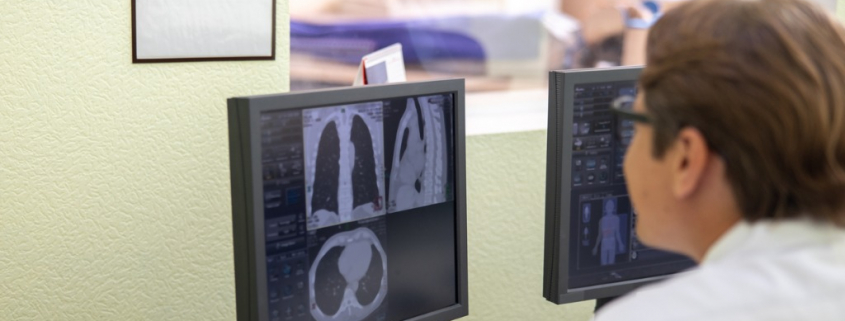
Radiology is the medical discipline that uses medical imaging to diagnose diseases and guide their treatment, within the bodies of humans and other animals. Radiology can be divided into several different fields including breast imaging, cardiovascular radiology, emergency radiology, musculoskeletal radiology and neuroradiology. The Radiological Society of North America (RSNA) is a radiology association that promotes excellence in patient care and health care delivery through education, research and technologic innovation. The ACR has accredited more than 39,000 facilities in 10 imaging modalities.
Timely, Accurate And Comprehensive Radiology Reporting Services From NDI
NDI teleradiologists interpret medical images while not physically present in the location where the images are generated. The NDI teleradiology company is a group of US Board certified and fellowship trained radiologists with subspecialty expertise.
They collaborate remotely with referring physicians nationwide and provide final radiology reports to healthcare facilities that perform radiological tests and diagnostic imaging exams.
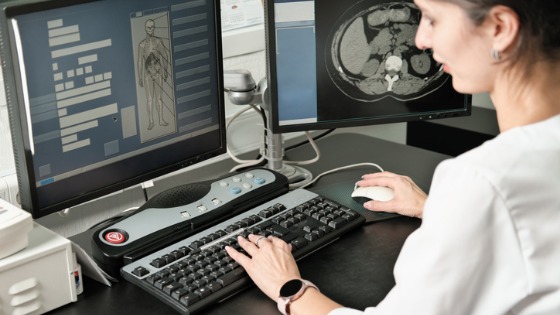
Hospitals, mobile imaging companies, urgent care facilities and private practices in the United States utilize NDI teleradiology services.
Request Teleradiology PACS Setup And Radiology IT Support
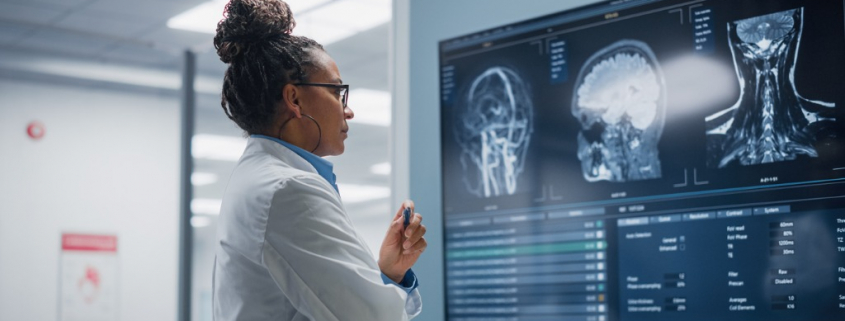
Find out how to sign up for, and implement, teleradiology services in the US with National Diagnostic Imaging. Start by requesting teleradiology services, here. Learn about the infrastructure required for teleradiology, here. The requirements of teleradiology are based on 3 components; an image sending station, a transmission network, and a receiving image station that must have a high-quality display screen that has been cleared for clinical purposes. The keys to selecting a top notch US teleradiology provider that offers high quality radiologic interpretations are listed here.
Contact NDI To Request Teleradiology Services Or Diagnostic Imaging Interpretations
Call 216-514-1199, email info@ndximaging.com or submit the form here.
US Telecardiology Services To Diagnose Heart Disease In 2025

The NDI telecardiology company provides remote online reporting of cardiac imaging studies of the circulatory system, cardiovascular system, heart and blood vessels. NDI telecardiology services are used by U.S. cardiovascular imaging centers to receive remote interpretations of electrocardiogram (ECG or EKG) results from heart imaging specialists online.
Telecardiology is a modern medical practice that allows remote specialists to interpret electrocardiographic recordings in order to diagnose, treat and manage patients with congestive heart failure, cardiac rhythm disorders, prehospital chest pain, arrhythmias and other heart-related conditions.
Through the transmission of clinical data and the electrocardiogram, telecardiology allows access to a real-time assessment (teleconsultation) without any need to travel for both patient and cardiologist.
In 2025, National Diagnostic Imaging telecardiology services are leading to an improved level of patient care in the United States. NDI telecardiology services contributed to the improved management of cardiac disease in primary care settings throughout the United States.
The use of NDI telecardiology services can shorten the time from diagnosis to the necessary treatment and reduce mortality in patients with acute myocardial infarction.
Telecardiology can shorten the time to diagnose atrial fibrillations and help determine the diagnosis for patients complaining about heart rhythm disorders which were not detected on the standard ECG recording.
Telecardiology helps to identify cardiac causes for syncope or collapse. The use of telecardiology significantly reduces the number of unnecessary referrals to a cardiologist or hospitalization, and shortens the time needed to treat patients with life-threatening conditions.
Telecardiology can also refer to the telemonitoring of patients with an IMD as part of the management of a cardiac pathology (treatment or diagnosis).
Telecardiology can promote heart health by monitoring patients that carry an implantable medical device, such as a cardiac pacemaker, cardiac defibrillator or a rhythmic holter.
A 12-lead electrocardiogram (ECG) is a medical test that is recorded using leads, or nodes, attached to the body. Electrocardiograms, sometimes referred to as ECGs, capture the electrical activity of the heart and transfer it to graphed paper.
Single-lead ECG machines are available in the form of a watch-like device to enable quick monitoring when the patient needs it while still at home.
Defibrillators are devices that send an electric pulse or shock to the heart to restore a normal heartbeat.
A Holter monitor is a small, wearable device that records the heart’s rhythm. It’s used to detect or determine the risk of irregular heartbeats (arrhythmias). A Holter monitor test may be done if a traditional electrocardiogram (ECG or EKG) doesn’t provide enough details about the heart’s condition.
The use of telecardiological techniques increases the quality and safety of work in managing patients with cardiovascular disease in FP practice. Usage of telecardiologic devices can also save money and bridge the gap between the primary and secondary healthcare levels.
Telecardiology intervention is used for patients with heart failure and for telemonitoring. Telemonitoring (TM) aims to predict and prevent worsening heart failure (HF) episodes and improve self-care, patient education, treatment adherence and survival. Telemonitoring of patients with heart failure reduces the rate of death from any cause and the rate of heart-failure–related hospitalizations.
The most positive clinical effects of telecardiology were early diagnosis, early treatment, and mortality reduction. Telecardiology can help early diagnosis and treatment of cardiovascular diseases. It also has great potential in reducing health care costs and increasing quality of life and patient satisfaction.
In 2025, the easiest way to get online access to telecardiology services in the U.S. is to call the National Diagnostic Imaging Telecardiology Company at 1-800-950-5257 or email info@ndximaging.com. NDI is a U.S. teleradiology service that provides remote radiology services by reading diagnostic imaging scans offsite.
Learn About The Current State of Teleradiology Across the United States
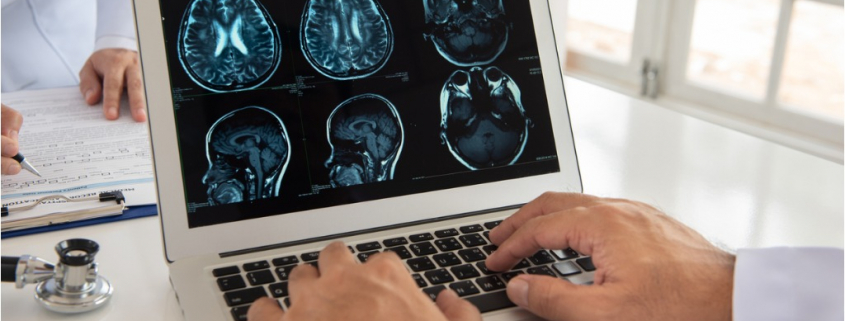
A national survey addressing radiologists’ habits, attitudes, and perceptions regarding teleradiology was distributed by e-mail to a random sample of ACR members in early 2019.
Journal of the American College of Radiology
Volume 16, Issue 12, December 2019, Pages 1677-1687
A national survey explored the current state of teleradiology practice, defined as the interpretation of imaging examinations at a different facility from where the examination was performed.

Among 731 of 936 respondents who indicated a non-teleradiologist primary work setting, 85.6% reported performing teleradiology within the past 10 years and 25.4% reported that teleradiology represents a majority of their annual imaging volumes; 84.4% performed teleradiology for internal examinations and 45.7% for external examinations; 46.2% performed teleradiology for rural areas and 37.2% for critical access hospitals; 91.3% performed teleradiology during weekday normal business hours and 44.5% to 79.6% over evening, overnight, and weekend hours.
Despite historic concerns, teleradiology is widespread throughout modern radiology practice, helping practices achieve geographic, after-hours, and multispecialty coverage; reducing turnaround times; and expanding underserved access.
Nonetheless, quality assurance of offsite examinations remains necessary. IT integration solutions could help smaller practices achieve teleradiology’s benefits. Read more here.
The size of the North America Teleradiology Market is predicted to be growing at a CAGR of 18.3% between 2022 to 2027. National Diagnostic Imaging is one of the best teleradiology companies in the United States.
Learn About Teleradiology Technology In The United States
Teleradiology systems became commercially available in the 1980s from a few vendors but clinical applications were limited. Teleradiology became workable in the mid 1990’s when high-speed communications networks became accessible throughout the United States and digital radiography started to replace film-based radiology.
Almost all radiologic exams are now digital. Before the advent of digital radiography (DR), images were acquired and viewed on sheets of film that were placed on a light box for interpretation.
Radiology was founded on a technological discovery by Wilhelm Roentgen in 1895. Historically, teleradiology started back in 1947 when x-ray images were transmitted using telephone lines.
Once teleradiology technology became affordable and generally accepted in all delivery systems, teleradiology really started to take off.

In 2017, teleradiology started transitioning to distributed radiology. Distributed radiology (Teleradiology 3.0) eliminates the static teleradiology model and replaces it with rapid distribution. Distributed radiology surpasses traditional teleradiology service models by addressing fundamental flaws in delivery design and focuses on clinical nuances to efficiently manage radiology practices. On-site radiologists, teleradiology technologists, teleradiology system managers and off-site radiology subspecialists at NDI combine their efforts to provide high-quality distributed radiology services and enhanced distributed imaging unified workflow solutions. Distributed radiology services from National Diagnostic Imaging provide worthwhile benefits to treating physicians and patients.
Because of COVID-19, many radiological practices have embraced teleradiology. When the COVID-19 pandemic hit in early 2020, radiology practices and departments started to increase their use of teleradiology and virtual technology tools to maintain their workloads from remote locations.
All noninvasive imaging such as digitized x-rays, computed tomography scan, magnetic resonance imaging, and ultrasound scan can be interpreted through teleradiology.
Today, teleradiology has facilitated a unique role in delivering quality radiologic interpretations to hospital emergency rooms and other health facilities that do not have access to a radiologist’s contemporaneous interpretation in the past.
For many years, the US government and the US military have advocated the use of teleradiology and digital imaging.
The National Teleradiology Program provides 24/7 diagnostic radiology services to Department of Veterans Affairs (VA) medical facilities located in all Veterans Integrated Service Networks (VISNs), rendering final diagnostic interpretations on a wide variety of modalities including, computerized tomography scans (CTs), X-rays, magnetic resonance imaging (MRI), ultrasound, and nuclear medicine imaging studies.

4 Emerging Trends and Technologies in Teleradiology – As key technological advancements become more pronounced, prolific developments are anticipated to be on the future horizon. Cloud computing enables flexibility in diagnostic imaging.
Technological advances have helped the growth of the US remote radiology market. Studies show exponential growth of about 140% in remote radiology services, revealing future aspects of remote radiology.
Teleradiology is extensively used in telemonitoring, teleconsultation, and telediagnosis, enabling radiologists to perform their daily work effectively.
Teleradiology technological advancements center on improved workflow efficiency. Traditional PACS and RIS systems are designed for use within large institutions and healthcare environments. Instead, teleradiology requires systems that function well for multiple radiologists within multiple institutions located at multiple sites.
Advances in digital diagnostic imaging technologies presents opportunities. Key teleradiology technological advancements, such as cloud computing have become more commonplace, cloud storage has become one of the hot teleradiology trends in the marketplace.
Teleradiology enables effective on-site solutions through real-time interpretation and North American cloud networks. Cloud computing in radiology is not only a web-based image sharing platform, but it also includes web-based Radiology Information System (RIS) modules.
Using cloud computing, radiology users can efficiently manage multimodality imaging units by using the latest software and hardware without paying huge upfront costs.
Increasingly, health care organizations are making the cloud a de facto location for safely storing and sharing vital patient data, supporting trends in health care mobility. Cloud computing has created changes in teleradiology. Surgeons and radiologists working together can share images and other data gathered from the cloud with their mobile phones and tablets.
Teleradiology primarily aids medical personnel in accessing patient information regardless of location, enhancing diagnostic coverage.
Teleradiology has proven to be a beneficial element of diagnostic imaging. Teleradiology services present extensive applications for radiologists to use web services that improve patients’ care and therapies without the requirement to be physically present on site.
The North America teleradiology market is expected to reach a value of USD 2,707.13 million by 2029.
Accreditation Programs For Diagnostic Imaging Centers In The U.S.

Diagnostic imaging lets doctors look inside human and animal bodies for clues about a medical condition. A variety of machines and techniques can create pictures of the structures and activities inside the body. The type of imaging a doctor uses depends on the symptoms and the part of your body being examined. Ultrasonography is a popular diagnostic imaging tool that looks inside a dog or cat’s body via the use of sound waves.
ACR Accreditation is recognized as the gold standard in medical imaging. The ACR offers accreditation programs in CT, MRI, breast MRI, nuclear medicine and PET as mandated under the Medicare Improvements for Patients and Providers Act (MIPPA) as well as for modalities mandated under the Mammography Quality Standards Act (MQSA). Accreditation application and evaluation are typically completed within 90 days.
The ACR has accredited more than 39,000 facilities in 10 imaging modalities. They offer accreditation programs in Mammography, CT, MRI, Breast MRI, Nuclear Medicine and PET, Ultrasound, Breast Ultrasound and Stereotactic Breast Biopsy.
The Joint Review Committee on Education in Radiologic Technology (JRCERT) accredits educational programs in radiography, radiation therapy, magnetic resonance, and medical dosimetry.
The National Accreditation Program for Breast Centers (NAPBC) provides the structure and resources you need to develop and operate a high-quality breast center. Programs that are accredited by the NAPBC follow a model for organizing and managing a breast center to facilitate multidisciplinary, integrated, comprehensive breast cancer services.
Get information from the Centers for Medicare & Medicaid Services (CMS) about their requirements for accreditation of advanced diagnostic imaging suppliers, here.
The Intersocietal Accreditation Commission (IAC) is a nonprofit, nationally recognized accrediting organization. The IAC was founded by medical professionals to advance appropriate utilization, standardization and quality of diagnostic imaging and intervention-based procedures.
The IAC is a nonprofit organization in operation to evaluate and accredit facilities that provide diagnostic imaging and procedure-based modalities, thus improving the quality of patient care provided in private offices, clinics and hospitals where such services are performed.
With a 30-year history of offering medical accreditation to facilities within the U.S. and Canada, IAC is also now offering accreditation in international markets. The IAC programs for accreditation are dedicated to ensuring quality patient care and promoting health care and all support one common mission: Improving health care through accreditation®.
The ACVR is the American Veterinary Medical Association (AVMA) recognized veterinary specialty organization™ for certification of Radiology, Radiation Oncology and Equine Diagnostic Imaging.
If you are a radiology imaging service in the United States that is looking for a company that can provide teleradiology coverage for your current and future case volume, contact National Diagnostic Imaging by phone at 216-514-1199 or by emailing info@ndximaging.com.
Imaging Facilities Accredited by the American College of Radiology
ACR accreditation helps assure your patients that you provide the highest level of image quality and safety. The process documents that your facility meets requirements for equipment, medical personnel and quality assurance.
Use this search form to find imaging facilities accredited by the American College of Radiology.
Facilities: To verify the accreditation status of specific units within your imaging facility, please call 1-800-770-0145.
ACR Accredited Facility Designations
Video Posted On You YouTube.com On November 11, 2015 By RadiologyACR
ACR National Radiology Data Registry
The National Radiology Data Registry is a tool for improving the quality of patient care using comparative performance and feedback on quality measures.
Comparing practice performance to regional and national benchmarks is an important tool for improving the quality of patient care. Participate in one of the eight registries that comprise the ACR National Radiology Data Registry (NRDR) to help your facility benchmark outcomes and process-of-care measures and develop quality improvement programs.
- Clinical Decision Support Registry (CDSR)
- CT Colonography (CTC) Registry
- Lung Cancer Screening Registry (LCSR)
- National Mammography Database (NMD)
- Dose Index Registry (DIR)
- General Radiology Improvement Database (GRID)
- 3D Printing Registry (3DP)
NDI HIPAA Compliant Teleradiology And Telemedicine Services In the U.S. In 2025
The HIPAA guidelines on telemedicine have been updated in 2025.
NDI’s teleradiology services are a subset of the telemedicine services that the company provides in the United States.
Radiology has the highest use of telemedicine for patient interactions than any other medical specialty, according to results from a nationally representative survey published by the Health Affairs by the American Medical Association (AMA).
The National Diagnostic Imaging teleradiology company delivers radiology-related services and electronic information via telecommunication technologies to patients and clinicians located throughout the United States.
Telemedicine is beneficial because it enables video or phone appointments between a patient and their health care practitioner. Telemedicine is the practice of medicine using technology to deliver care at a distance.
While teleradiology and remote reading is not new, its expansion was greatly accelerated in 2020-2021, and continues to grow today, due to the COVID-19 pandemic.
About The Teleradiology Industry In The United States
Teleradiology is an important commercial activity in the United States. The American College of Radiology policy is to require physicians interpreting images in other states to be licensed in both the state where the image was generated as well as the state where the interpretation takes place.
Some university-based teleradiology practices in the United States, provide teleradiology services to supplement academic radiology department income.
About Veterinary Teleradiology Services In the United States
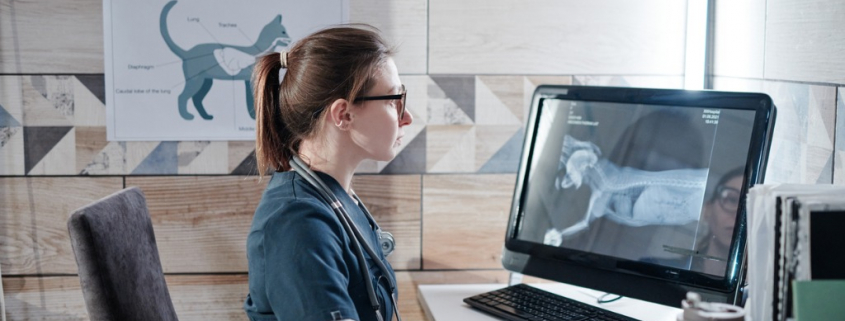
December 6, 2022 – The American College of Veterinary Radiology Teleradiology Guidelines – These recommendations formulated by the ACVR Digital Imaging Standards Committee (DISC) have been adopted by the ACVR as guidelines for the veterinary profession. Teleradiology is the transmission of diagnostic images and information, such as radiographs or MRI images from one veterinary facility to another for analysis.
Teleradiology enables veterinarians to consult radiologists about their patients by digitally sharing images over the Internet. The primary purpose of telemedicine and teleradiology is to elevate the standard of care for animal patients.
Veterinary teleradiology is the transmission of a pet’s diagnostic images (radiographs, ultrasounds, contrast studies, CT, and MRI) for the purpose of consulting with a Board Certified Veterinary Radiologist. The complex nature of many veterinary disease processes can require the use of multiple or specialized imaging studies which warrants a radiologist’s knowledge and experience.
Telemedicine improves the pet’s medical care by allowing a radiologist to remotely provide services without actually having to be at the location of the pet.
Veterinary teleradiology was first commercially introduced in the early 1990s with limited success, mostly influenced by slow Internet speeds and large file sizes.
Currently the practice of teleradiology in veterinary medicine is widespread due to the availability of broadband Internet connections, image compression, and economically priced PACS and DICOM software.
Specialized diagnostic imaging and teleradiology can provide important details about the health of a pet and therefore can be extremely valuable when creating a treatment plan. Read FAQs about teleradiology services for veterinarians, here.
The Veterinary Medical Imaging company teleradiology service is structured to augment the two main advantages of teleradiology: 1) rapid consultation and report turnaround, and 2) safe, reliable image submission and report transmission.
The teleradiology service available through the Ohio State University Veterinary Medical Center (VMC) provides a faster means to get digital images to a radiologist for interpretation and back out to the practitioner to assist with case management. Most results are provided within 24 hours or less.
Teleradiology company, VetCT, is calling for companies developing and deploying AI in the field of veterinary diagnostic imaging to impose the highest standards of self-regulation. The teleradiology provider is calling for stringent self-regulation of diagnostic imaging AI.
SignalPET offers advanced artificial intelligence-supported veterinary radiology.
VetCT are global veterinary teleradiology and teleconsulting specialists. They provide world-class veterinary services to an international client base 24/7 365 days a year.
VetRad is a leading provider of veterinary teleradiology services. Their board-certified radiologists support improved patient outcomes by providing concise, accurate reports and practical clinical recommendations to more than 1000 Referral Partners located throughout the United States.
In 2021, Synergy Veterinary Imaging Partners joined the VetRad team of veterinary teleradiology.
The global veterinary teleradiology market size was valued at USD 218.2 million in 2021, growing at a CAGR of 4.8% during the forecast period 2022-2028.
The practice of medical image analysis and interpretation by a radiologist who is not present at the location where the pictures were created is known as veterinary teleradiology. Hospitals, veterinary radiology facilities, and pet clinics all use this market.
U.S. And International Teleradiology Services And Technology Insights
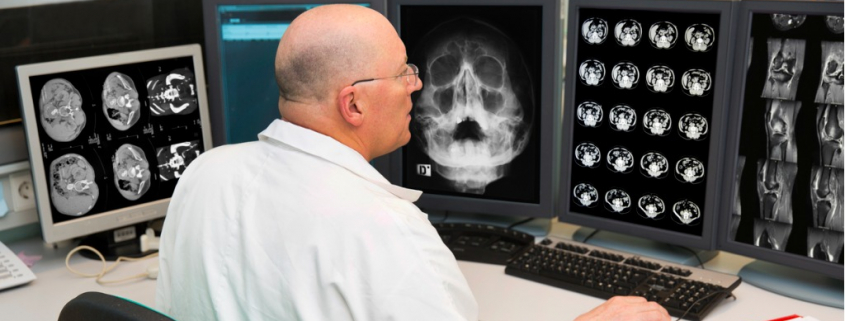
International teleradiology has the potential to improve the quality and timeliness of radiology services by providing interpretations when local physicians performing those services are unable to provide immediate coverage. NDI’s US HIPAA compliant teleradiology services and PACS systems have historically been on the cutting edge of technological innovation. Hospitals and treating physicians have been using NDI teleradiology services since long before the COVID-19 pandemic.
In the United States, radiology practices leverage technology to embrace remote reading. When the first reported cases of COVID-19 emerged in the U.S. in the spring of 2020, many radiology groups shifted the way they worked to allow their radiologists to read imaging studies from home. This shift initially required an adjustment in both mindset and in the technological logistics of setting up at-home workstations.
The ACR Task Force on International Teleradiology recognizes that there is no inherent technological difference between domestically generated teleradiology interpretations and reports and those generated outside of the United States.
International teleradiology should adhere to the ACR Technical Standard for teleradiology (PDF).
An international digital imaging standard for radiographic images was established in the late 1980s, to harmonize communication, storage and archiving of medical image information; namely, digital imaging and communications in medicine (DICOM). Initially a radiology-specific standard, it has since then expanded to include many other areas in medicine. The DICOM standard is used in all Swedish hospitals since medical imaging was digitized in the mid-1990s.
Advances in digital diagnostic imaging technologies presents opportunities. Teleradiology is an electronic transmission of radiological patient images, such as X-rays, computed tomography (CT) images, and magnetic resonance images (MRI), from one location to another for interpretation and consultation. Typically, this is done over standard communication lines, a wide-area network, or a local-area network. Through teleradiology, images can be sent to other parts of the hospital or locations across a country or world.
The current technological possibilities and European political agenda are both opening the way for cross-border telemedicine services including teleradiology.
For imaging studies being transmitted cross-border (EU, world), the terminology international teleradiology or cross-border teleradiology seems appropriate. Distinction should be made between international teleradiology within vs. outside EU-borders since for the latter no specific regulatory framework is available.
While international reporting of scans from the US, Singapore, Africa, Middle East and Europe has been in practice as early as 2000 from teleradiology centers in India and other countries with high levels of accuracy and rapid report turnaround, domestic utilization of teleradiology was limited to internal coverage by radiology groups and hospitals till a few years ago.
In the wake of increased awareness, rising demand for imaging support and wide penetration of broadband technologies, teleradiology has become integral to many radiology practices, with an even stronger push toward an equal share during the COVID-19 pandemic, with its offerings of radiologist availability, accessibility and efficiency, while maintaining social distancing.
Teleradiology has leveraged the advent of internet, universal adoption of digital imaging and the DICOM standard, department and enterprise level PACS, and rapid growth of computing technologies to provide a workflow balance transcending geographical boundaries.
The modular separation of the different steps starting from image generation, transmission, viewing and interpretation have enabled international teleradiology with workflows connecting referring centers and radiologists in disparate regions united by radiologist qualifications and legal frameworks.
In 2022, an imaging industry supplier best known for a widely adopted radiology reporting platform partnered on radiological artificial intelligence with a company that pioneered GPUs and accelerated computing. Nuance Communications and NVIDIA announced their strategic alliance on November 14, 2022. Together the companies are aiming to put AI-based diagnostic tools “directly into the hands of radiologists and other clinicians at scale, enabling the delivery of improved patient care at lower cost,” according to the announcement.
The radiology tech firm OpenRad launched their enterprise remote reporting platform at the at the 2022 RSNA Annual Meeting. The solution called Enterprise Edition combines a domestic cloud platform with an image transfer and connectivity device to speed up the diagnostic process and reduce the impact of radiology staff shortages.
In November of 2022, Royal Philips (Royal Healthcare) highlighted their portfolio of clinical workflow solutions at the Radiological Society of North America (RSNA) annual meeting.
In November of 2022, 3M Health Information Systems (HIS) and Rad AI announced a strategic sales partnership in which 3M will resell Rad AI’s Continuity incidental findings management and Omni impression generation solutions as a value-add to customers using 3MTM M*Modal Fluency for Imaging solution.
The global teleradiology services market is expected to surpass US$ 22,520.8 Million by 2030. The top 5 drivers of the global teleradiology market are listed here.
In November of 2022, Premier Radiology Services announced, in partnership with Blackford, that they are the first privately-held teleradiology organization to offer the BoneView from GLEAMER fracture detection AI solution.
The Teleradiology Market Report 2030 is an in depth study analyzing the current state of the teleradiology market.
The International Teleradiology Corporation uses cloud computing to deliver a service to you in a secure and efficient manner that complies with all teleradiology and patient privacy standards.
Many radiologists at the National Diagnostic Imaging teleradiology company work from home using high-powered diagnostic imaging PACS workstations and multiple high-resolution monitors.
The ACR White Paper on Teleradiology Practice: A Report From the Task Force on Teleradiology Practice proposes comprehensive best-practice guidelines for the practice of teleradiology.
Teleradiology And PACS
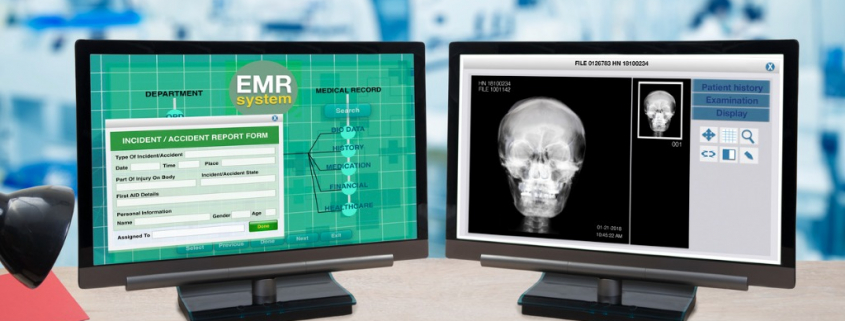
PACS technology from NDI is used to capture, store, distribute and display medical scans and images.
Due to a host of technological, interface, operational and workflow limitations, teleradiology and PACS/RIS were developed as separate systems serving different purposes.
PACS/RIS handled local radiology storage and workflow management while teleradiology addressed remote access to images.
Rural hospitals, urgent care centers, radiology practices and diagnostic imaging centers in the US, rely on NDI’s telemedicine services, specifically teleradiology services.

Learn about US medical and legal requirements related to teleradiology and telemedicine from the American College Of Radiology.
NDI diagnostic radiologists provide long-distance patient and clinician communication, healthcare, radiological reporting and consulting.
NDI is one of the leading providers of telehealth and teleradiology services in the United States. Telehealth providers can deliver telehealth services across state lines, depending on rules set by state and federal policies.
Due to state licensure laws, NDI radiologists have multiple state licenses that enable them to provide radiological reading services across various states and different time zones.
National Diagnostic Imaging is one of the best teleradiology companies to work for from home.
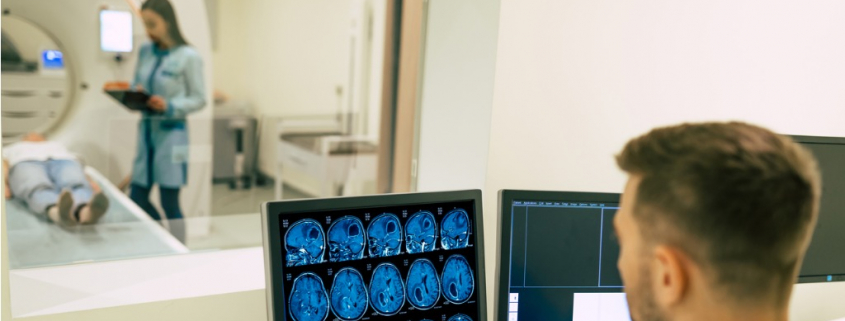
Many radiology practices outsource their call coverage to NDI teleradiologists who interpret radiographic images off-site from radiology reading rooms located across the US.
Many radiology practices outsource their call coverage to NDI teleradiologists who interpret radiographic images off-site from radiology reading rooms located across the US.
Diagnostic radiologists in the United States that practice telemedicine for the National Diagnostic Imaging company routinely communicate directly with treating physicians and patients without having a face-to-face interaction.

NDI remote radiologists quickly deliver detailed diagnostic imaging reports via state-of-the-art teleradiology systems to referring physicians in all 50 states. NDI’s referring physician portal enables the treating physician who ordered the radiology exam for their patient, to access their report via a private login. Typically NDI radiologists report their finding to referring physicians or a patient’s ordering physician. There are also instances when US board certified radiologists communicate directly with patients when they deliver their findings and formal diagnostic reports.
National Diagnostic Imaging’s teleradiology services rely on static images that are obtained from diagnostic imaging departments located throughout the Unites States, where patients are not required to be present for the radiological study interpretation, except in cases such as as biopsies, angiograms or complicated ultrasound scans.
However, telemedicine relies heavily on an in-person clinical evaluation of the patient. At times, important clinical information can only be acquired from a physical examination.
HIPAA Rules And Compliance
The HIPAA guidelines on telemedicine have been updated in 2025.
HIPAA compliance means meeting the requirements of HIPAA (the Health Insurance Portability and Accountability Act) and is regulated by the US Department of Health and Human Services (HHS).
The Health Insurance Portability and Accountability Act (HIPAA) sets the standard for sensitive patient data protection. Companies that deal with protected health information (PHI) must have physical, network, and process security measures in place and follow them to ensure HIPAA Compliance.
HIPAA Rules and Compliance Training Video
Posted On YouTube On April 3, 2019 by SafetyVideos.com
About HIPAA Compliant PACS And Teleradiology Systems
National Diagnostic Imaging utilizes HIPAA compliant PACS medical imaging technology and teleradiology systems to provide telemedicine services, radiology outsourcing, and off-site radiology reporting services.
The National Diagnostic Imaging US teleradiology company continually reassess and strengthens their HIPAA compliance in order to provide secure on-site radiology readings and interpretations, as well as second opinion radiology interpretations online.
In an unprecedented global situation such as the COVID-19 pandemic, teleradiology has shown that it has unique benefits:
- Allowing radiologists to work from home while maintaining social distancing.
- Ensuring 24/7 coverage.
- Access to COVID-19 cases from around the globe.
- Rapid online training and education.
When the fast-moving COVID-19 pandemic hit the U.S. in early 2020, radiology practices and departments — almost overnight — began to ramp up the use of teleradiology and other virtual technology tools to maintain their workloads from a remote location.
To promote safety and curb the spread of SARS-CoV-2, many radiological practices embraced teleradiology to minimize physical interaction among healthcare workers in closed working spaces and between patients and HCWs.
In 2020, because of COVID-19, telehealth regulations for National Diagnostic Imaging radiologists were relaxed. In March of 2020, Medicare temporarily opened up the ability for radiologists to provide medical care to patients without the need for them to be in the same physical location.
Beginning March 2020 and continuing through the end of the current COVID-19 Public Health Emergency (PHE), the rules for providing telehealth services were relaxed.
On October 13, 2022 the PHE was renewed by Xavier Becerra, Secretary of Health and Human Services. She declared that a public health emergency exists and has existed since January 27, 2020, nationwide.
About National Diagnostic Imaging Teleradiology Services And Clients In 2025
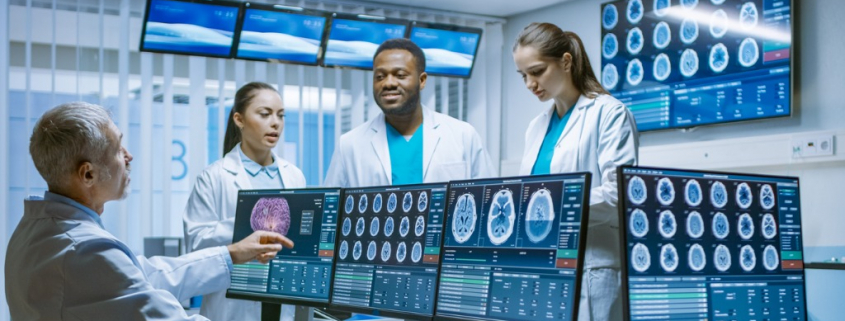
Referring physicians and healthcare providers throughout the United States use National Diagnostic Image teleradiology services. Teleradiology improves the quality of diagnostic imaging interpretations for patients. Other NDI teleradiology clients include clinicians, other radiologists, diagnostic imaging centers, rural hospitals, individual patients, emergency departments, radiology departments, healthcare professionals, mobile x-ray services, cardiologists, chiropractors and orthopedic surgeons.
Teleradiology services are used by treating physicians to electronically transmit medical images to remote off-site NDI radiologists for radiology reads, diagnostic interpretations and radiology consultation.
NDI trained teleradiologists dictate and write formal reports that document and communicate the results of the radiologic study or procedure.
After NDI radiologists read and interpret the images, they include key findings and a diagnoses in the official record of medical images. NDI teleradiology services use a PACS system to transmit radiology reports back to originating healthcare facilities or referring physicians.
In the US, private for-profit companies such as National Diagnostic Imaging, offer national teleradiology services (i.e., professional interpretation of radiologic studies of all types by American Board of Radiology certified radiologists).
In 2025, The NDI Teleradiology Company Is Collaborating With Hospitals To Implement Teleradiology Systems
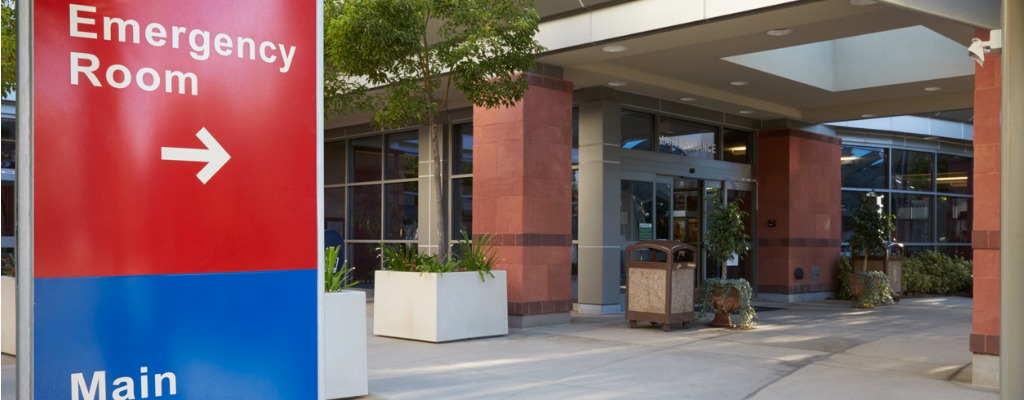
US hospital radiology diagnostic imaging departments contract with NDI for teleradiology reporting services to achieve cost savings and to improve patient care. NDI teleradiology systems support US hospital medical center radiology services by minimizing delays in producing after-hours diagnostic imaging interpretations of MRI, X-ray, ultrasound and CT exams.
National Diagnostic Imaging teleradiology systems and services for hospitals and emergency rooms are based on the electronic capture, transmission, storage, and retrieval of images for remote viewing and interpretation.
NDI provides teleradiology services to emergency medicine doctors located all across the US. By implementing NDI’s teleradiology systems, hospitals, emergency rooms and imaging centers are increasing their independence and flexibility while saving time and resources.
NDI’s hospital teleradiology systems and services have proved to be an important tool in providing access to fast, high quality radiologic interpretations.
In 2025, NDI’s teleradiology services are facilitating a special role in delivering quality radiologic imaging interpretations to hospitals, emergency rooms and other health facilities that did not have access to a radiologist’s contemporaneous interpretation in the past.
NDI’s teleradiology reporting services currently provide coverage for small hospitals, clinics, diagnostic imaging centers, emergency rooms, specialty medical practices and urgent care centers. The US teleradiology provider also offers subspecialty radiologic coverage that is not available at smaller medical clinics and centers.
NDI provides US-based teleradiology services, radiologic diagnostic interpretations, outside reads, radiology outsourcing solutions and radiology study overreads for clients and healthcare facilities in all 50 states. NDI provides radiology image interpretations via teleradiology.
National Diagnostic Imaging (NDI) uses PACS software to provide teleradiology services to obtain and transmit radiological patient images, radiology exams and diagnostic studies, and to transmit interpretations and reports to referring physicians.
National Diagnostic Imaging provides a wide variety of teleradiology solutions for diagnostic imaging centers, radiologists, hospital emergency rooms, office-based imaging practices and outpatient clinics.
NDI radiology reading services are extremely popular with small outpatient imaging centers. NDI’s advanced teleradiology systems are HIPAA compliant, which helps to ensure patients’ privacy.
In 2025, more institutions, mobile imaging companies, private practices, urgent care facilities, rural hospitals and community hospitals in the United States, are engaging full-service teleradiology providers such as NDI to benefit from cost savings.
Teleradiology benefits include reduced costs, enhanced expertise and improved coverage.
NDI helps diagnostic radiology providers transition some of their radiology expenses from fixed to variable costs. One of the most important benefits offered by NDI is the potential for sub-specialty reads by a trained provider.
Additionally, medical imaging facilities, radiology administrators and outpatient diagnostic imaging centers are now using NDI’s teleradiology services to help handle the COVID-19 pandemic.
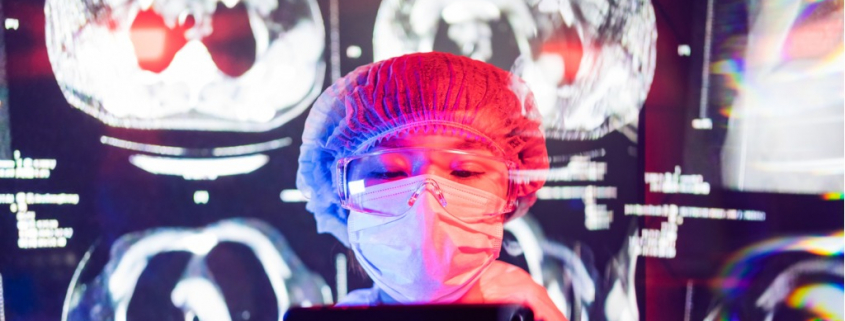
Chest CT has a potential role in the diagnosis, detection of complications, and prognostication of coronavirus disease (COVID-19). Chest CT is valuable to detect both alternative diagnoses and complications of COVID-19 (acute respiratory distress syndrome, pulmonary embolism, and heart failure), while its role for prognostication requires further investigation.
This study aimed to assess the characteristic chest X-ray features of COVID-19 and correlate them with clinical outcomes of patients. Chest CT imaging may be used to stratify the severity of lung involvement and to predict outcomes in COVID-19, which in turn may assist physicians with proper triaging of patients and allocation of resources.
Knowledge of the natural temporal evolution of lung abnormalities in COVID-19 may be helpful to radiologists in determining the stage of disease and in distinguishing them from potential complications when evaluating chest CT examinations.
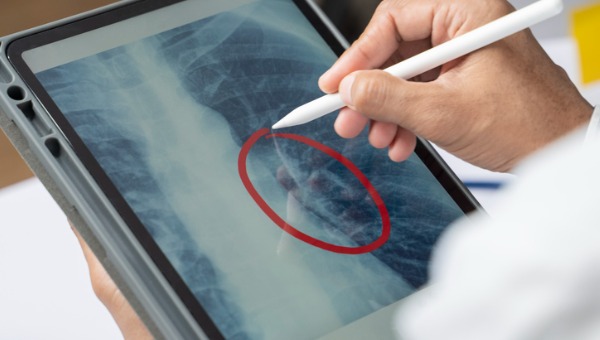
Pooled results showed that chest CT (69 studies) correctly diagnosed COVID-19 in 87% of people who had COVID-19. However, it incorrectly identified COVID-19 in 21% of people who did not have COVID-19. Pooled results showed that chest X-ray (17 studies) correctly diagnosed COVID-19 in 73 % of people who had COVID-19.
NDI radiologists read X-Rays of coronavirus patients and interpret their findings in reports that are sent via teleradiology to referring physicians. Due to COVID-19, private practices, imaging centers, radiology departments and practices are now using NDI’s teleradiology services more than ever.
More and more radiology practices and imaging institutions are using NDI teleradiology services to implement off-site reading into their normal workflow and to decrease their radiologist’s exposure to SARS-CoV-2.
Get information on teleradiology pricing here.
NDI is a radiology outsourcing company that provides remote radiology reading services and interpretation services via teleradiology.
For additional information regarding our outsourced teleradiology imaging services, please use the links below or contact us.
2025 NDI Radiology Scan Reading And Interpretation Fees For Businesses And Healthcare Facilities
-
- CT Scan Reads And Interpretation Rates From $40 Per Study
- X-Ray Scan Reads And Interpretation Rates From $12 Per Study
- Cardiology Scan Reads And Interpretation Rates From $14 Per Study
- MRI Scan Reads And Interpretation Rates From $60 Per Study
- Musculoskeletal (MSK) Scan Reads And Interpretation Rates From $12 Per Study
- Ultrasound Scan Reads And Interpretation Rates From $25 Per Study
- Mammogram Scan Reads And Interpretation Rates From $32 Per Study
- Echocardiogram Scan Reads And Interpretation Rates From $45 Per Study
- PET CT Reading, Interpretation And Reporting Rates From $99 Per Study
- Nuclear Imaging Reading, Interpretation And Reporting Prices From $36 Per Study
- B Reads, B Reading Interpretations and B-Reader Fees From $40 Per Study
Please contact National Diagnostic Imaging by calling (216)-514-1199, sending an email to info@ndximaging.com or by complete the form above to request a quote for radiology reads and interpretations.
NDI Nuclear Medicine Physicians Provide Nuclear Medicine Diagnostic Imaging Reading, Interpretation And Reporting Services In The US In 2025
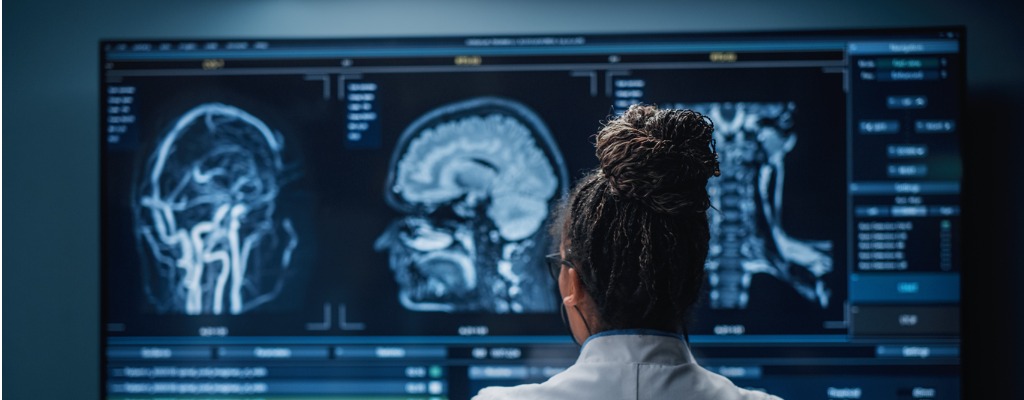
Nuclear medicine physicians at NDI use teleradiology systems and PACS technology to remotely interpret nuclear imaging procedures that detect radiation from different places in the body, after radioactive tracer materials (radiopharmaceuticals) are administered. Nuclear medicine radiologists at NDI are certified by the American Board of Nuclear Medicine and the American Osteopathic Board of Nuclear Medicine. NDI’s fees for nuclear medicine diagnostic imaging reading, interpretation and reporting services start at $36 per study.
Teleradiology Service Billing And CPT Codes For Radiology Procedures
The HIPAA guidelines on telemedicine have been updated in 2025.
CPT 2025 Anticipated Code Changes
For the 2025 Current Procedural Terminology (CPT®) code set, a number of radiology code changes have been proposed to include new codes to report MRI-monitored transurethral ultrasound ablation prostate (TULSA), transcranial Doppler, percutaneous radiofrequency (RF) ablation of thyroid, fascial plane blocks, and magnetic resonance (MR) examination safety procedures.
Additionally, MRI-guided high intensity-focused ultrasound (MRgFUS) will be converted from Category III to Category I.
Teleradiology Billing Guidelines
Teleradiology billing guidelines are listed here and teleradiology company service fees are listed here.
Learn more about teleradiology billing and coding, here. Learn more about Medicare billing for radiology, here. Medicare proposed a major cut in radiology reimbursement for 2021.
Get information on billing for radiology overreads, here. 2022 telehealth CPT codes are listed here. The Current Procedural Terminology (CPT) code range for Radiology Procedures 70010-79999 is a medical code set maintained by the American Medical Association.
In late 2022, the CMS released their final 2023 Medicare reimbursement rules.
The Centers for Medicare and Medicaid Services (CMS) uses the Medicare Physician Fee Schedule (MPFS) to reimburse physician services.
Regarding reimbursement, the ACR Task Force on International Teleradiology recognizes that there is no inherent technological difference between domestically generated teleradiology interpretations and reports and those generated outside of the United States (federal law prohibits Medicare from reimbursing physicians who interpret radiologic studies from outside the United States.)
Medicare considers the site of service to be where the physician interpreted a study). In both instances, assurance of quality and competency is necessary. Therefore, payment for radiologic interpretations and subsequent reports that are rendered by international teleradiology is appropriate if the following criteria are met.
Learn more about Medicare claims processing for radiology services and other diagnostic procedures in this Centers for Medicare & Medicaid Services PDF. Acceptable HCPCS codes for radiology and other diagnostic services are taken primarily from the CPT4 portion of HCPCS. The CPT-4 is a uniform coding system consisting of descriptive terms and identifying codes that are used primarily to identify medical services and procedures furnished by physicians and other health care professionals.
The U.S. Centers for Medicare and Medicaid Services (CMS) published its final Medicare Physician Fee Schedule (MPFS) and Hospital Outpatient Prospective Payment System (HOPPS) rules for 2023.
In the MPFS, radiology reimbursement cuts are projected to be lower than initially estimated from the agency’s proposed rule in July. In its preliminary analysis, the American College of Radiology (ACR) estimates that the 2023 MPFS changes will result in an overall 2% decrease in radiology reimbursement. Payments for interventional radiology are expected to drop by an aggregate decrease of 3%, while nuclear medicine will decline by 2% and radiation oncology and radiation therapy centers will dip by 1%.
The ACR had previously projected that the proposed draft rule would have led to a 3% drop in radiology and nuclear medicine reimbursement, as well as 4% decrease for interventional radiology and a 1% decrease for radiation oncology.
Search For And Apply For Teleradiology Jobs In The United States
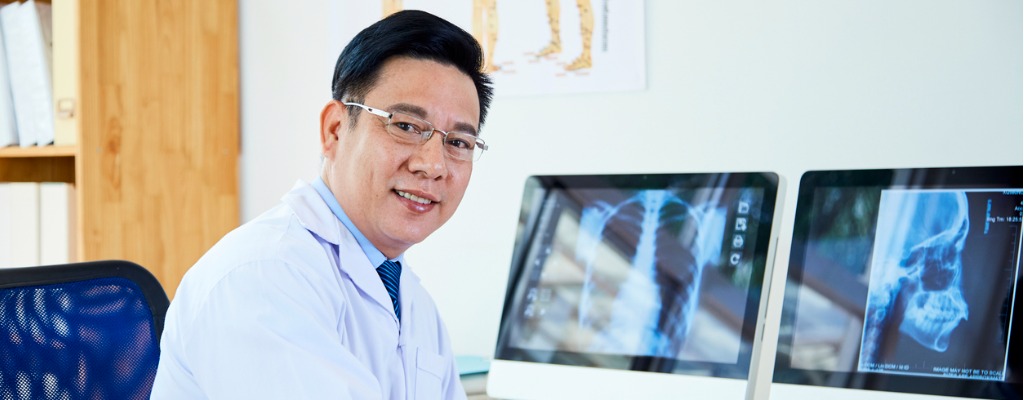
Popular teleradiology jobs include teleradiology support jobs, teleradiology technologist jobs, remote teleradiology jobs, at-home teleradiology jobs, international teleradiology jobs and neuroradiology teleradiology jobs.
Open US Teleradiology Jobs & Pay | Work Remotely At Home [How To Get A Daytime/Part Time Job At NDI]
Posted on YouTube.com On July 29 2022 by National Diagnostic Imaging
To get a teleradiology job at home, submit your CV, here. To work as a teleradiologist, you need to have basic computer knowledge and have access to a high speed Internet service.
Review National Diagnostic Imaging teleradiology jobs and careers for physicians on Radworking.com. Based in Cleveland, National Diagnostic Imaging is a sub-specialty teleradiology service.
RadWorking.com offers a comprehensive nationwide radiology job board for physicians and allied health professionals seeking job opportunities.
Submit your CV or resume to begin a daytime, full-time or part-time US teleradiology job working remotely from home for the National Diagnostic Imaging company.
Teleradiology refers to the practice of a radiologist interpreting medical images while not physically present in the location where the images are generated.
Teleradiology is the practice of the digital transmission of diagnostic medical images, such as X-rays, MRIs, ultrasounds and CTs, between health care practitioners.
View teleradiology jobs available on the American College of Radiology Career Center website. Search for and apply to open jobs at the American College of Radiology Career Center.
Apply for teleradiology jobs, radiologist jobs, IT project manager jobs and X-ray technician jobs on Indeed.com.
View teleradiology, nighthawk, perm and locum tenens job openings and positions, here.
Get information on US Department of Veterans Affairs teleradiology jobs, here. View teleradiology jobs in the United States on LinkedIn.com.
Additional Teleradiology Service Information
- NIOSH-Certified B Reader Services
- Outsourced Diagnostic Imaging Interpretations
- Radiology Reading Services & Turn Around Times
- For Imaging Centers & On-Site Professional Services
- Teleradiology Setup, IT Services & Radiology Department Support
- Teleradiology Quality & Image Development Implementation
- STAT Reporting & Critical Results Reporting
- Administrative Services & Teleradiology Credentialing
- Quality Assurance Peer Review Program
- Teleradiology Credentialing
- Referring Physician Portal

